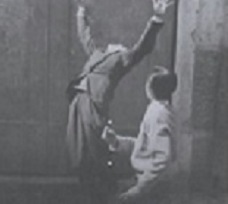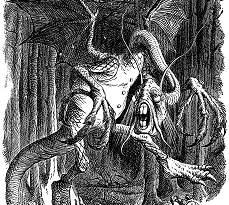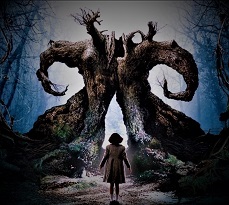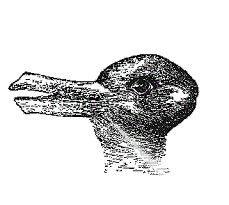Decipher
Every piece of expression has some element of ambiguity, whether explicit or subtle – it is part of the interpretative and imaginative nature of all art forms. Some, however, are deliberately riddled with multiple meaning. They ask the reader to begin a journey of decipherment where they are at liberty to travel in their own direction…
The act of decipherment is a source of fascination for the human mind, and research has found “once the answer is understood, memory for it remains much more permanent because it is unexpected” (Danesi: 2017: accessed 1/2/16). The unpredictability of a puzzle’s composition makes it a highly enthralling activity. Popular culture – such as the debate encompassing the colour of ‘The Dress’, which became so ubiquitous that it now has its own Wikipedia entry – confirms that illusions, puzzles and deciphering are homage to the addictive pursuit of understanding we have as humans, attempting to remove ourselves from an uncomfortable state of confusion. This desire for knowledge and understanding is associated with the reader being in control of the meaning of the text and how it is perceived. This is otherwise known as ‘writerly texts’, where the reader has an authoritative command in what the art form could possibly mean without authorial intrusion. In many ways, this could debatably promote the use of decipherment from merely a literary technique to part of the thematic undertones of an expression. In fact, Gaskin states that “ambiguity may play a decisive role in determining the meaning”, and talks about certain literatures having an embedded “semantic range” (Gaskin: 2013: 183), suggesting ambiguity goes as far back to the selection of the words themselves. This anthology not only questions the ambiguity of lexical meaning within the texts, but additionally, the ambiguity of authorship, and how this affects the overall interpretation of literature as a whole.
Literary theory of the 1960s saw critics abandon the once God-like position of the author to focus on the reader. The most prominent figure of this movement was Roland Barthes, who gave his work the sinister title of ‘Death of the Author’. In more mainstream culture, the 1980s saw the release of the Rubix Cube, which, as of January 2009, has been purchased 350 million times worldwide. Whilst there is a clear solution at the end, it asks the player to carefully evaluate all possibilities. Far in the modern era, even biologists refer to decoding strands of DNA as an act of decipherment, yet deciphering, that we know of, goes as far back as 1799 to what is arguably one of mankind’s most famous act of decipherment: the Ancient Egyptian hieroglyphs. The assigning of meaning to entities, in whatever form, seems to be rooted by a desire to uncover as much as possible about something that has a deeper interpretation than it initially reveals. It seems to decipher is an innate quality we have always possessed.
The cover photo – the rabbit-duck illusion – is a visual demonstration that perceptions decide meanings rather than meanings deciding perceptions. A picture that has existed for over one hundred years, it shows the deliberate attempt to leave the spectator wondering whether they have the correct interpretation, and in some cases, desperately trying to see what it is others can see that they cannot. Whilst some may brand this technique as misleading, ‘Decipher’ seeks to present decipherment as an intelligent, tactical means of control for the audience. In terms of literary reputation, ambiguity, and the resulting act of decipherment, often have positive associations; novels such as Henry James’ The Turn of the Screw and James Joyce’s Finnegan’s Wake are renowned members of the literary canon and rely on the reader deciphering the prose for their literary impact. That being said, multiplicity of meaning has summoned an unfavourable image of being problematic – “but even leaving such troubling ambiguities aside…” (Bradford: 2010: 145) – this anthology views deciphering as an opportunity to discover more by placing texts side by side that were never intended to be compared in order to show the dynamic nature of ambiguity and the resulting act of decipherment. Gifford claims decipherment is a succinct, inconspicuous method of transferring power from narrator to reader: “…the narrator’s power to engage the reader in the transferred or transmitted function of decipherment.” (Gifford: 2005: 218) This almost heralds decipherment as a paradoxical way to gain more clarity from the meaning of a text through intense examination. This further weakens the notion that lack of clarity is a negative outcome as a result of carelessness. Bowditch even goes as far to say that “Ambiguity is not simply an incidental or marginal feature of literary texts but relates in basic ways to the reader’s experience of literature.” (Bodwitch: 2013: 3) – the ambiguity becomes an intrinsic part of the narrative that is bound to our presence and activeness in the text.
‘Decipher’ uses four extracts from two poems, a short story and a film to highlight the variability and power of decipherment, and why this is so important for the interpretation of the narrative. It is comprised of multimodal, multi-temporal and multi-situated texts to encompass the broad, varying avenues of decipherment in the art form. What links all of the extracts together is the element of fantasy – the reader is left to decipher what is reality and what is not. In addition to this, this anthology has taken advantage of its online platform, and has a page containing puzzle of various ambiguous art forms, just to further emphasis how varied deciphering, and the degree of ambiguity can be. Whilst ambiguity places more demand on its audience, it is arguably creates a deeper connection between the reader and the text, thus conforming to the notion that the reader – positioned above the authority of the author – gives the text meaning, with the writer acting as a glorified middle man. Although this may seem disparaging to the creativity of the author, it in some ways summons an air of divinity – that they are tasked with giving the reader options to a decipher a meaning of their choosing.
Fernando Pessoa’s The Book of Disquiet, a lifetime project written in prose fragments and published forty-seven years after his death, demonstrates that the fragmented form gives the reader a deciphering role in the text, almost like someone piecing together a puzzle. Each fragment is independent of one another and can be looked at individually or in any number of sequences. The latest Penguin edition has a different order of fragments from the original edition, but the number of its original position is noted in brackets at the top next to its new position’s number. The Book of Disquiet is its own decipherment project – the fragments we receive as readers in a way almost symbolise an anthology. On its own, the extract has a rather pessimistic tone, but its function in the whole text, especially when it is positioned towards the beginning of the book, sets up an attitude that is then transgressed and changed. This exemplifies the significance of contextualisation in order to decipher meaning from a text, and highlights that fragments in particular can come to mean a number of different things. Although this is arguably the most artificial of ambiguity featured in this anthology, it not least reflects that the act of decipherment is a desired effect writers want their readers to experience.
Most art forms, like The Book of Disquiet, have a two-way interpretation when it comes to decipherment: it is either ‘this’ or ‘that’, but some extreme forms have no apparent meaning. A classic example of this is The Jabberwocky, written by Lewis Carroll, embedded in his novel Through the Looking-Glass, and What Alice Found There. The poem follows the confrontation and triumph of a fictitious creature called The Jabberwocky, accompanied with an illustration of a ferocious, frightening beast – and this becomes the only aid the reader will receive to attempt to decode its poetic counterpart. Commonly hailed as a nonsense poem, Carroll uses sound, namely onomatopoeia, to convey discrete meanings as oppose to the actual meaning of the words. Whilst the basic narrative is clear, the words used remain without authorial definition, and whilst some of his coinages appear in the Oxford English Dictionary, they mainly state the possible words they are constructed from. A total of six words coined in the poem have been added to the Oxford English Dictionary, but surprisingly, the poem has been translated into 29 languages — translators attempted the enormity of the task by finding sounds in their native language that closely corresponded with those in the poem. Empson discusses the multiple ways in which ambiguity can be conceived – such as the use of metaphor or multiple meanings in one – but does not describe a method in which the entire text is extremely ambiguous. This highlights the significance of anthologies such as these – Empson’s neglect of nonsense literature when it comes to describing ambiguity poses the question as to whether The Jabberwocky can even be classified as a poem, or whether it more closely resembles a word puzzle.
The ambiguity and decipherment behind The Jabberwocky is starkly explicit. Guillermo del Toro’s El Laberinto del Fauno (Pan’s Labyrinth) exemplifies the subtle theme of decipherment by giving the audience a choice of two interpretations of a story that follows an eleven-year-old girl, Ofelia, who discovers a fantasy world, following the Civil War in Spain. Is the world we see real or is it in Ofelia’s head? The narrative of the film intertwines the fantasy world with the real world, but for most of the film Ofelia is the only character who can see this world and she is the only character we see interact with it. However, the clip included in this anthology is the only example in the film that see’s characters, other than Ofelia, interact with the fantasy world – yet they do not see what she sees. Like Don Quixote’s obsession with chivalric stories of brave knights and Margery Kemp’s fixation on religious stories from the Bible, del Toro presents a character who is absorbed in fairy tale literature. There are many parallels between the fantasy world and the real world throughout the film, but this clip reminds the audience that Ofelia is a child who is being forced to grow up and come to reality. The prominent theme in this film seems to be that stories whose narratives are questionable and that need deciphering have an unprecedented effect on the reader.
The second poem in the anthology is Edgar Allan Poe’s The Haunted Palace, where the ambiguity is much less deep-rooted than The Jabberwocky. Rather than using nonsense neologisms, Poe uses contrasts between the physical and celestial, and the body and the illusionary, and leaves the reader to decide which side of the juxtaposition they believe to be more authentic. The narrative delves into a world – which is presented as either being on Earth or in a more heavenly setting – which observes a King, either one which is alive and looking at his kingdom, or one who is dead and is gazing from a height. The root of the ambiguity, and the authorial intention, is more clear in the poem’s defining quotation: “the ruler of the realm was seen.” (l.13) The reader therefore knows that the ruler exists, but not in what corporeal capacity and which location they are in. This is arguably the best example of ambiguity, which needs to be deciphered by the reader, being used as a theme within the anthology – it seems Poe deliberately constructs a narrative where all possible meanings have the ability to be true. His continuous use of semantic fields reinforces this idea – it allows the reader to be continuously drip-fed through the poem a variety of contrastive thoughts. This could therefore not be more fitting to Barthes’ theory of ‘Death of the Author’ – it suggests that there is no authorial intention, because the author intended for their intention be ignored and remain blank in favour of the reader-response. This seems to be what all of the extracts, despite their difference in form, genre and author, have in common – they all use ambiguity to highlight how drastically the meaning of the same thing can change depending on perception. The act of decipherment becomes a vehicle for intense exploration.
Art forms cannot be easily categorised by facts and non-facts, truths, realities, and certainties, and this strikes at the very purpose of ‘Decipher’ – instead of following the interpretation given to them by the author – like in more straightforward literature – utilise the weapon of their own point of view. Can you decipher ‘Decipher’?




